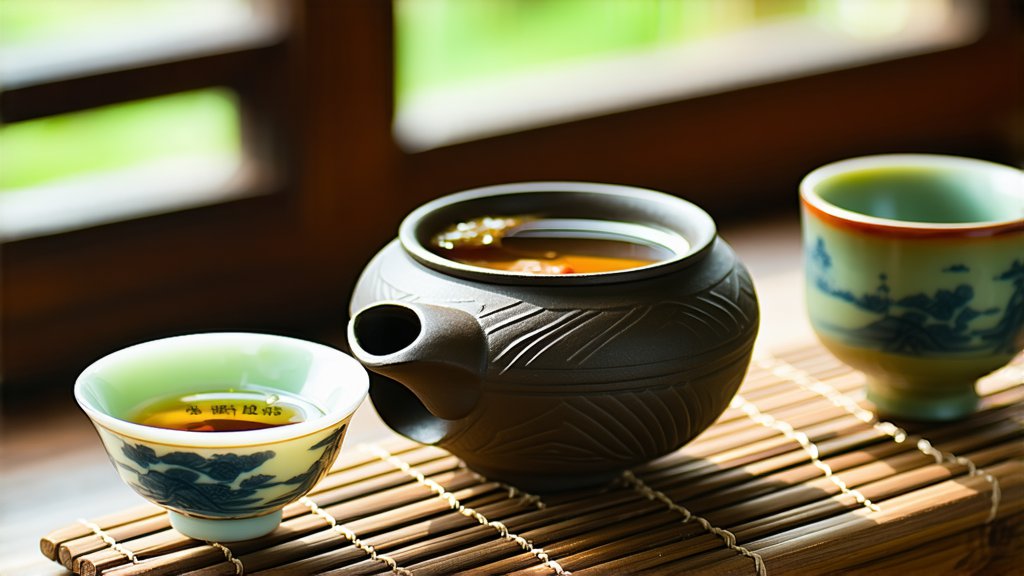
In the vast and diverse landscape of Chinese tea culture, few varieties captivate the senses and mind quite like Pu-erh tea. As one of the most renowned representatives of dark tea (heicha), Pu-erh stands out not only for its unique production methods but also for its profound historical roots and the intricate art of its appreciation. This article embarks on a journey to unravel the mysteries surrounding this extraordinary beverage, exploring its origins, varieties, manufacturing processes, and the subtle yet sophisticated rituals of its tasting.
Historical Roots: A Legacy of Millennia
The story of Pu-erh tea is deeply intertwined with the history of Yunnan Province, nestled in southwestern China, where it is believed to have originated over a thousand years ago. According to legend, during the Tang Dynasty (618-907 AD), tea from Yunnan was transported along ancient trade routes to Tibet, a journey that took several months. To preserve the tea during these long treks, it was pressed into cakes or bricks, a method that inadvertently facilitated fermentation, giving birth to what we now know as Pu-erh.
Varieties: Sheng Pu-erh vs. Shou Pu-erh
Pu-erh tea comes in two primary forms, distinguished by their processing methods and aging characteristics: Sheng (raw) Pu-erh and Shou (ripe) Pu-erh.
-
Sheng Pu-erh undergoes minimal processing after picking, consisting mainly of sun drying and rolling. It is then stored in natural conditions, where it gradually ages and oxidizes over time, developing complex flavors and aromas. This type is prized for its potential to transform and mature, offering a living testament to the passage of time.
-
Shou Pu-erh, on the other hand, undergoes a post-fermentation process known as "wet piling" or "wo dui," which accelerates the aging process through controlled humidity and temperature. This results in a mellower and earthier taste, often favored by those seeking immediate enjoyment without the wait associated with Sheng Pu-erh.
The Art of Making Pu-erh
The craftsmanship behind Pu-erh tea is a testament to the skill and tradition passed down through generations. The process begins with the careful selection of Camellia sinensis var. assamica leaves, native to the high mountains of Yunnan. These leaves are then withered, rolled, and either left to age naturally for Sheng Pu-erh or subjected to the wo dui process for Shou Pu-erh.
For Sheng Pu-erh, the aging process takes place in well-ventilated warehouses, allowing microbial activity to interact with the tea leaves, transforming their chemical composition and enhancing their flavor profile. Shou Pu-erh's wo dui process, while more intensive and faster, requires precise control to ensure optimal fermentation and avoid spoilage.
The Ritual of Tasting: Savoring the Essence
Tasting Pu-erh tea is an experience that transcends mere consumption; it is a meditative practice that engages all the senses. The ritual begins with selecting the appropriate vessel—often a clay teapot for its ability to enhance the tea's flavors—and boiling spring water to the perfect temperature, typically around 200°F (93°C).
A small amount of Pu-erh is rinsed briefly to awaken the leaves before the first brew. Each subsequent infusion reveals new layers of complexity, from earthy undertones to hints of fruitiness and sweetness. The color of the liquor ranges from deep amber to rich reddish-brown, while the aroma evolves from fresh hay to aged wood and beyond.
To fully appreciate Pu-erh, one must take note not just of the taste but also the mouthfeel, body, and the lingering aftertaste. A high-quality Pu-erh will envelop the palate with a smooth texture and leave a lasting impression that invites contemplation.
Health Benefits: More Than Just a Beverage
Beyond its cultural significance and sensory pleasures, Pu-erh tea has long been revered for its potential health benefits. Rich in antioxidants, polyphenols, and other bioactive compounds, it is believed to aid digestion, promote cardiovascular health, support weight management, and even possess anti-aging properties. While scientific research continues to explore these claims, many enthusiasts attest to feeling revitalized and balanced after regular consumption.
Conclusion: A Timeless Journey
Pu-erh tea is more than just a beverage; it is a bridge connecting past traditions with present-day appreciation and future exploration. Its depth, complexity, and versatility make it a fascinating subject for both novices and connoisseurs alike. As you delve into the world of Pu-erh, remember that each cup tells a story—one that spans centuries, cultures, and the very essence of life itself. Embrace the journey, savor each sip, and let Pu-erh tea be your guide to a deeper understanding of Chinese tea culture and beyond.